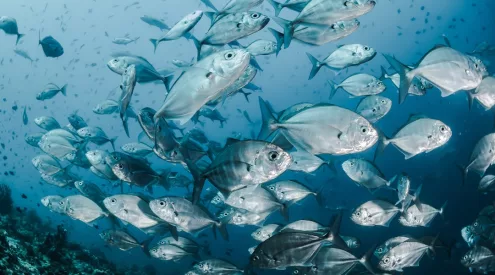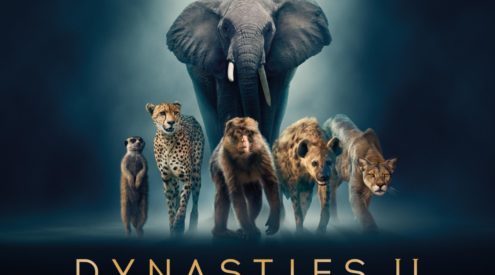An unusual series of photographs taken by Rory Bruins on a trip to the Kgalagadi depicts the frequently seen (and often overlooked) springbok in the midst of a stotting, or ‘pronking’, display. The well captured sequence shows how these antelope use their agility and strength to leap high into the air, the reason for which has not been defined; however, common speculation suggests that it is a boastful enactment of capability and fitness used to ward off predators and attract mates. It has also been said that this small, largely unappreciated buck also pronks out of excitement – an Animalian interpretation of jumping for joy! (Check out this adorable springbok video: a springbok licked my camera.)
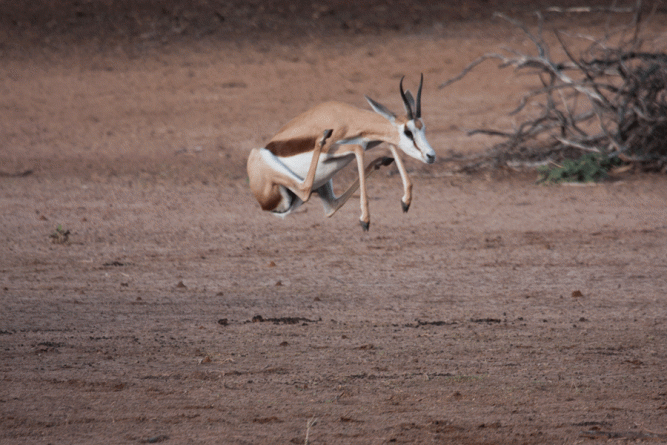
© Rory Bruins
These joyful leaps have been known to reach heights of up to 4 metres, repeatedly, at very short intervals, making the whole display quite something to watch. Pronking, meaning to ‘show off’ in Afrikaans, can be differentiated from springboks’ more ordinary jumping behaviour quite clearly. Pronking is a stiff-legged, vertical leap, accompanied by a rounded back and a bowed head, and is not intended to carry the jumper far in terms of distance, but rather to impress with the heights reached. This behaviour is not predictable and there is no indication that the spontaneous pronking will commence, adding to the mystery behind why they do it. The sudden leaping action does not necessarily alarm or alert the rest of the herd and often the energetic behaviour doesn’t even warrant a look from fellow herd members.
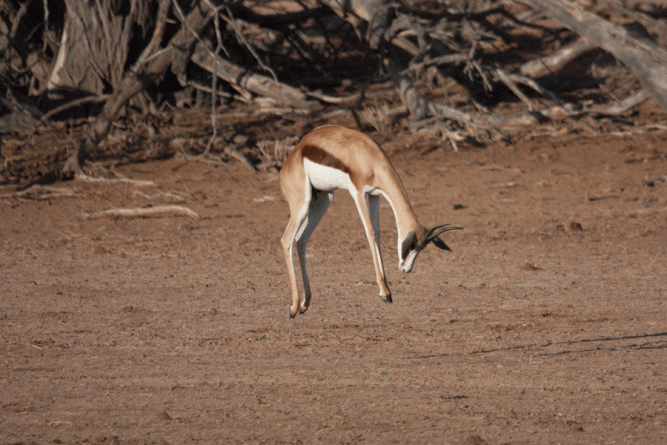
Assuming the position. Pronking involves jumping vertically into the air with stiffened legs, arching the back and bowing the head. © Rory Bruins
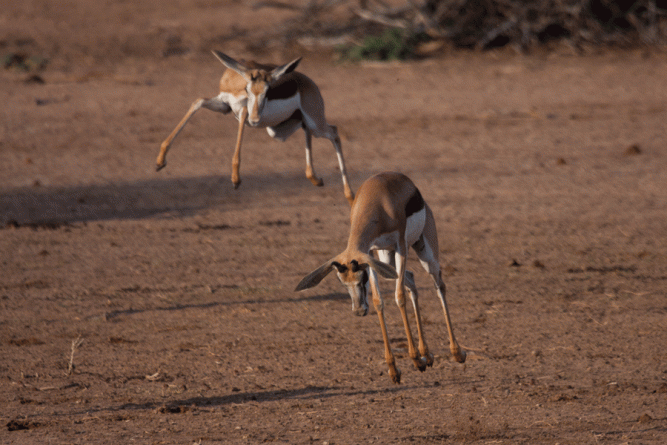
A mixed sequence of pronking and jumping is used by springboks in playful and joyful moods. © Rory Bruins
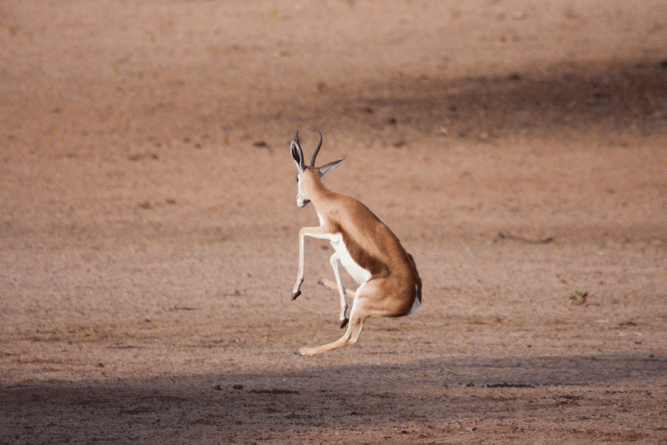
© Rory Bruins
The action of pronking goes hand in hand with something that makes springboks even more unique. Giving them their Latin name, Antidorcas marsupialis, is a pocket or pouch extending along their lower backs, beginning at the tail, housing an ample crest of snow white fur. The ‘flaps’ of skin fold together along their backs, hiding the white hair completely, until pronking commences and the pocket appears to turn inside out revealing a fan of fur. Male springbok (rams), engage in this behaviour in order to impress the females (ewes), showing off their ability to jump high into the air and display the hidden white fur, which releases a scented secretion from the inner glandular skin. This waxy substance is said to smell like honey to humans, and in nature it seems to be as attractive, as it works to further entice the female audience.
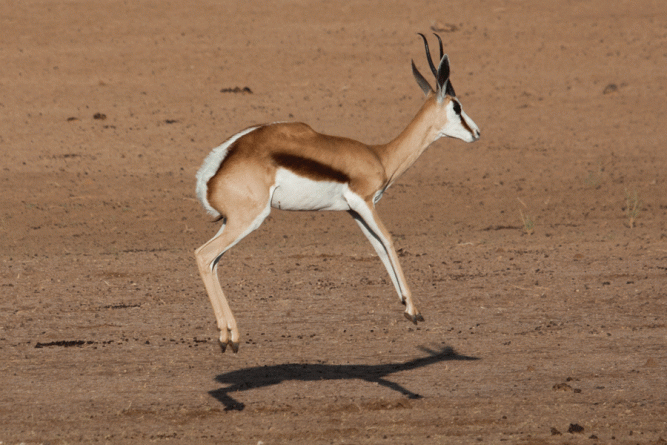
Springboks pronk to demonstrate their agility and strength to impress females and ward of predators. © Rory Bruins
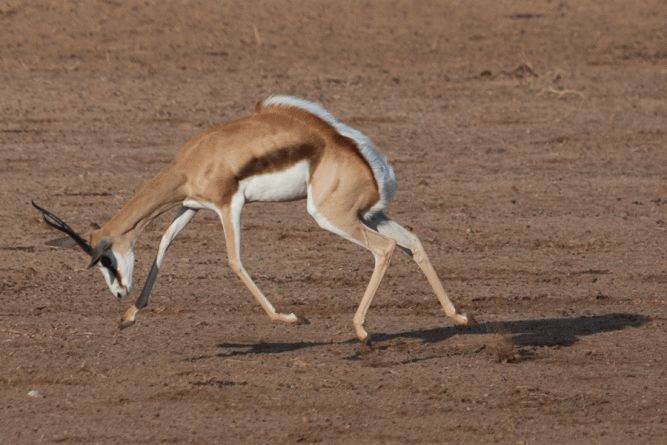
During pronking behaviour, a pocket-like ridge of skin on the springbok's back turns inside out revealing a crest of white fur. © Rory Bruins
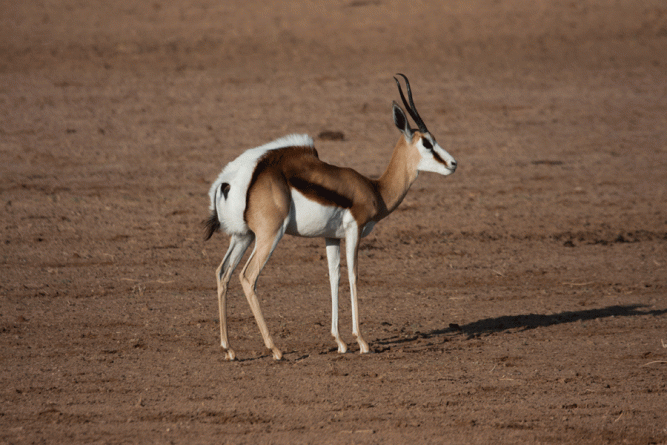
The glandular skin secretes an oudor as the ridge of fur opens up, attracting females. © Rory Bruins
The Springbok is the national animal of South Africa, emblazoned proudly on the rugby team jersey and having previously appeared as the emblem of the South African Air Force and South African Airways (today, it remains the SAA radio call sign). The springbok was printed on South African postage stamps, the Krugerrand coin, and as the logo for ‘South Africa’s Own Car’, the Ranger, made in 1968.
Such grand representation speaks of the Springbok as an asset, an animal to be admired. It is rumoured that some springbok can go a lifetime (roughly 10 years) without ever having to drink water. This is an extremely impressive example of the antelope’s superb adaptation to its arid habitat, which leaves even the most successful predators parched and exhausted. The springbok has evolved to thrive in the harsh desert environment of northern South Africa’s karoo, the southern grasslands of Namibia, through the bushveld of Windhoek and into the northern reaches of the Etosha National Park, while in Botswana, they inhabit the vast Kalahari Desert. In earlier years, before the erection of farm fences, springbok numbering as many as 2, 500 000 would migrate through South Africa, the entire herd taking a matter of days to pass by a town.
It has been said that this ungulate population is on the increase, despite the popular trade of their pelts, their meat and their horns. They have adapted to survive extreme heat and drought, feeding off both grass and bush vegetation, depending on what is available. Grazing at night when the grass retains far more moisture than during the heat of the day; feeding with their white rumps facing the blistering sun means that direct heat is reflected and less water is used to keep cool; mating in the dry season so that their vulnerable lambs are born in time with the great offerings brought with the rains.
This is a species that populates south western Africa in abundance despite being subjected to some of the most punitive elements under the sun. Fiercely territorial and determined to survive, the springbok has earned its place extolled on the South African coat of arms.
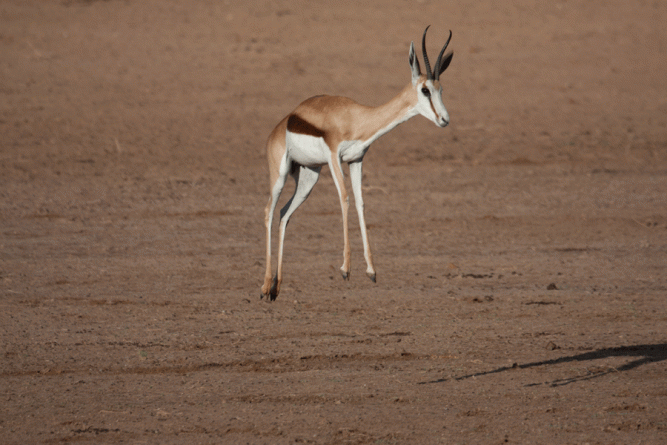
The springbok is South Africa's national animal and is represented on its coat of arms. © Rory Bruins
This post is brought to you by Sun Safaris, organisers of Southern and East African safaris, holidays and nominees in the category of ‘Africa’s Leading Safari Company’ for the World Travel Awards 2013. Check out Sun Safaris on Facebook, Twitter and Pinterest and vote for them below.










